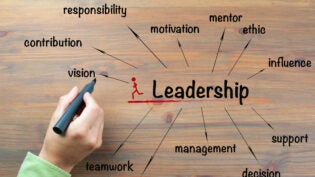
When it comes to the field of project management, just about every business, no matter how big or small, has their own path and processes to ensure everything runs smoothly.
Whether a small local business or a multinational conglomerate, you’re going to find that there are a range of different processes within project management that make some businesses better than others at a specific task. As a business owner, you might be interested in the processes within effective project management and we’ll take a look at these below.
For those interested in implementing project management solutions such as PMO 365 for improved collaborative tools and efficiency, or for those after a more streamlined workflow, we have some essential points in our article.
That out of the way, let’s take a look at some of the more effective processes within project management and how you can mimic these in your business.
How to Know Which to Choose
Before we delve into the processes that make project management effective, we’ll first take a look at how you should choose the solutions for your business.
Of course, every business across the industry runs a little differently, and because of this you’re going to want to do a rather comprehensive assessment of how your business operates and work to understand what processes are going to improve and inhibit your workflows.
Things to consider include:
- The size of projects within your business
- Your requirement for collaboration between staff
- The ease of use of project management tools
- How important flexibility is within project management processes
Those points out of the way, let’s take a look below at some of the best project management processes that can help to transform and grow your business.
Agility and Flexibility Methods
To one of the most common and arguably the most popular project management processes, the agility and flexibility methodologies are here to ensure you’re able to undertake the more iterative or incremental workflows without workflows becoming too sparse or confusing for staff.
These project management processes are some of the more ‘lapse’ in a sense given that this is the process you’re going to follow if you aren’t in the most competitive field or if a project can take a little time.
That in mind, the agile method is going to be the choice for you if your projects are rather complex, though have a time frame that supports a more drawn out deadline.
You’re going to be able to rely on the flexibility of this methodology to enable your business to slowly begin a task with a vision statement and a comprehensive road map which then goes to work on a plan and an incremental start to finish process.
Risk Response and Reaction Processes
When it comes to keeping your business ready for all outcomes of a project, the risk response processes are integral to implement.
If you’re a project manager or a business owner, you’re going to be far better off being prepared and ready should something go wrong, and you’ll be able to recover a lot faster because of this.
Outstanding project management teams will have an entire risk management plan ready to roll at all times, with the specifics of each project outlined in this plan. That in mind, you’re not only able to be ready when something goes wrong, but can see avenues where something could go awry during a project.
Those points in mind, your risk response plan and processes will do two key things:
- Prepare you for when something goes wrong.
- Give you insight into where things could go wrong and provide insight to prevent this.
As you’ll agree, this is a crucial safety net for all businesses and allows a contingency plan to be developed.
Transparency Processes
A third key process within effective project management is the assurance of transparency in each project that’s being undertaken.
Most businesses in the industry today simply delegate tasks to each employee or contractor without showing them where this project fits in. This is essentially giving everyone the ability to make their own puzzle pieces and hoping that they all fit together at the end of the day.
It’s far more effective to showcase to everyone involved in a project exactly what they’re working on and what the outcome is predicted or hoped to be.
With this level of transparency, there’s a higher chance of a quality outcome and a majorly reduced chance for errors in projects.
Highlighting Task Purpose
Our final process we’d like to outline within the effective project management toolkit is the focus on task purpose visibility and setting long term goals.
For most employees, it’s vital for the purpose and the importance of a task to be visible from the outset, which shows everyone their value to a specific project. With that in mind, you’re going to see a workforce that is more empowered and motivated to work when they’re able to see the ‘big picture’ outcome of their work.
These project management processes may not fall under the umbrella of management of specific tasks, though they are integral to keeping work continuing at a brisk pace and at a high quality.
1832 Views












